

News
SpaceX’s first Starlink V2 satellites spotted at Starbase
On Monday, SpaceX was spotted loading some of the first Starlink V2 satellite prototypes into a custom mechanism designed to refill Starship’s magazine-like payload bay.
While it’s not the first time SpaceX has used the dispenser, the photos captured by photographer Kevin Randolph for the YouTube channel ‘What about it!?’ are the first to clearly show real prototypes of the next generation of Starlink satellites. According to CEO Elon Musk, those Starlink Gen2 or V2 satellites will be “at least 5 times better”, “an order of magnitude more capable,” and about four times heavier than current (V1.5) Starlink satellites.
The potential of the new satellite bus design paired with Starship’s massive fairing and lift capacity could dramatically improve the viability and cost-effectiveness of SpaceX’s Starlink constellation. First, though, the company needs to launch and qualify prototypes of the new satellite design and verify that all associated ground support equipment works as expected.
Due to the designs SpaceX has settled on for both Starlink V2.0 satellites and the Starship hardware that will deploy them in orbit, that ground support equipment and the general path each satellite will take from its arrival at the launch facilities to liftoff on a Starship are wildly different than anything done before. July 18th’s photos (and screenshots from a recent factory tour) confirm that the next-gen satellites are basically enlarged versions of their smaller predecessors, which are also narrow rectangles.
The new spacecraft have a very similar aspect ratio but are around seven meters long and three meters wide (23′ x 10′) instead of approximately 3m x 1.5m (10′ x 5′). They also appear to be about twice as thick and reportedly weigh ~1,250 kilograms to V1.5’s estimated 310 kilograms (~2,750 lb vs ~680 lb). As a result, the V2.0 bus will have about 7-10 times more usable volume than V1.0 and V1.5. It should be no surprise, then, that each next-gen satellite could offer almost magnitude more usable bandwidth.
Assuming that Starship launch costs are roughly the same as Falcon 9 and that Starship can only launch a similar 50-60 satellites at once, an almost 10x performance improvement from a satellite that only weighs five times as much relative to V1.5 would make Starlink V2.0 constellation deployment at least twice as cost-efficient to deploy even if Starship could only launch the same mass (~16 tons) as Falcon 9. In fact, a recent SpaceX render suggests that Starship will be able to carry 54 Starlink V2.0 satellites initially. As a result, even if Starship costs five times more to launch than Falcon 9 (~$75M), it will still be cheaper per unit of bandwidth launched. If Starship eventually reaches marginal launch costs as low as Falcon 9 (~$15M), the cost of Starlink launches (not including satellite cost) could plummet from about $15,000 per gigabit per second (Gbps) to around $1,500-2,500 per Gbps depending on individual satellite bandwidth.
The total cost of the network will be higher, of course, and dependent on more variables, but the combination of Starship and V2.0 satellites could eventually reduce the relative cost of Starlink launch operations by a factor of 5-10. If Starlink V2.0 satellites are actually cheaper to manufacture per unit of throughput than V1.5 satellites, which is not implausible once mass-production begins, those savings will deepen. If Starship can quickly mature and becomes fully and efficiently reusable, the equation could become even more favorable.
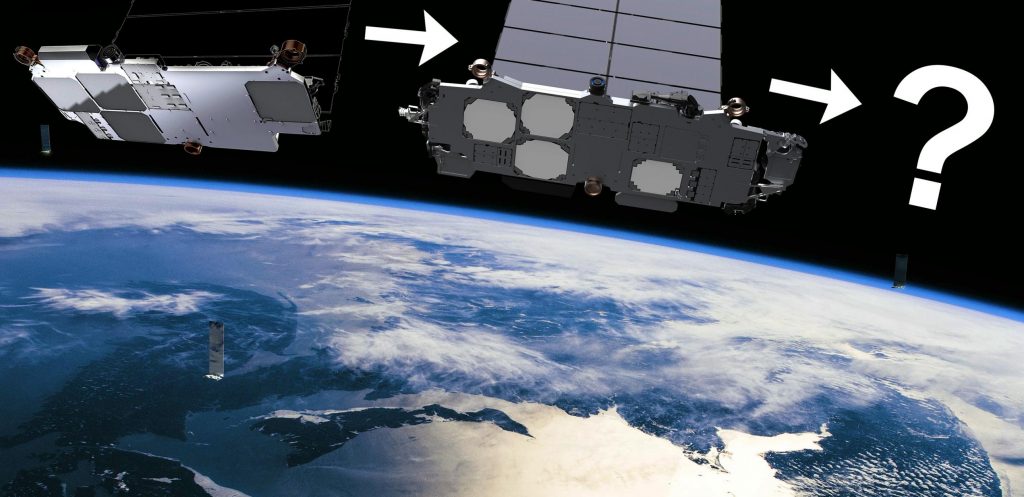
Still, loading Starship with satellites is going to be no minor feat and will add a significant amount of complexity and risk relative to the methods SpaceX currently uses for Falcon 9 Starlink launches. SpaceX’s initial Starship payload bay design is a roughly square enclosure that slots just above the ship’s uppermost tank dome and below its inward-curving nosecone. Per a render of the mechanism released last month, it measures about nine meters (30 ft) tall and eight meters (26 ft) wide, can store up to 54 Starlink V2.0 satellites, and dispenses pairs of satellites through a relatively tiny payload bay door that’s only wide enough for the task at hand.
Starship’s airframe is almost exclusively welded together. Once the nosecone and payload bay are installed on top of a ship, the only way to access the interior of the bay is through the dispenser door or an even smaller human-sized access port. SpaceX’s solution: build a mobile satellite storage box that will be lifted by crane (or launch tower arms) dozens to hundreds of feet off the ground and use the payload bay’s own dispenser mechanism in reverse to load satellites like bullets into a giant magazine. If that sounds simple, which it shouldn’t, it’s not.
It’s great, then, to see SpaceX apparently practicing that process with some of the first Starlink V2.0 prototypes. In photos captured on July 18th, workers were spotted loading several satellites into the only existing ‘loader’ inside one of Starbase’s three main factory tents. Each satellite was lifted using a load-spreader device that was presumably required to prevent the extremely long and thin satellites from bending too much in the middle during the lift. It’s unclear whether SpaceX is solely practicing the process or if it’s actually installing satellites well in advance for loading onto a Starship prototype.
Starship S24 is in the middle of preflight testing and has already been greeted by the satellite loader once before, possibly to load a prototype or mockup before ground testing began. Starship S25 appears to be at least a month or two away from completion, though its nose and payload bay section are much closer.
Elon Musk
Elon Musk confirms Grok 4 launch on July 9 with livestream event
The rollout will be accompanied by a livestream at 8 p.m. Pacific Time.

Elon Musk has officially confirmed that Grok 4, the latest version of xAI’s large language model, will launch on July 9. The rollout will be accompanied by a livestream at 8 p.m. Pacific Time, hosted on xAI’s official account on X.
xAI goes straight to Grok 4
Back in May, leaks indicated that xAI was getting ready to ship Grok 3.5. Considering Musk’s recent comments, however, it appears that the artificial intelligence startup would be focusing on the large language model’s fourth iteration instead. As noted in a Financial Express report, users on X have sighted references to Grok 4 in the lead up to the update’s launch, such as “grok-4-prod-mimic” and “Grok 4 Code.”
Musk’s Grok 4 announcement comes as AI competition intensifies between major players including OpenAI, Google, and xAI. With Musk’s Colossus supercomputer fully operational in Memphis, xAI appears to be accelerating its AI product roadmap.
Musk pushes Grok toward political neutrality
Grok 4’s launch also follows a recent controversy involving political bias, as noted in a CNN report. Last week, Grok responded to a user on X stating that political violence in the U.S. since 2016 had come more from the political right than the left. The chatbot noted in a later reply that its answer was based on information from sources like Reuters, the Journal of Democracy, and University of Maryland studies.
Musk stated that Grok’s response was a “major fail.” “Major fail, as this is objectively false. Grok is parroting legacy media. Working on it,” he wrote in a post on X. By the end of June, Musk noted that he was “grinding all night with the xAI team” and that they were making “good progress.” He also stated that the model “Will be called Grok 4. Release just after July 4th. Needs one more big run for a specialized coding model.”
News
Tesla opens massive solar Supercharger station in California
The Supercharger opened to customers ahead of Fourth of July weekend, while Tesla continues phase two of construction on the site.
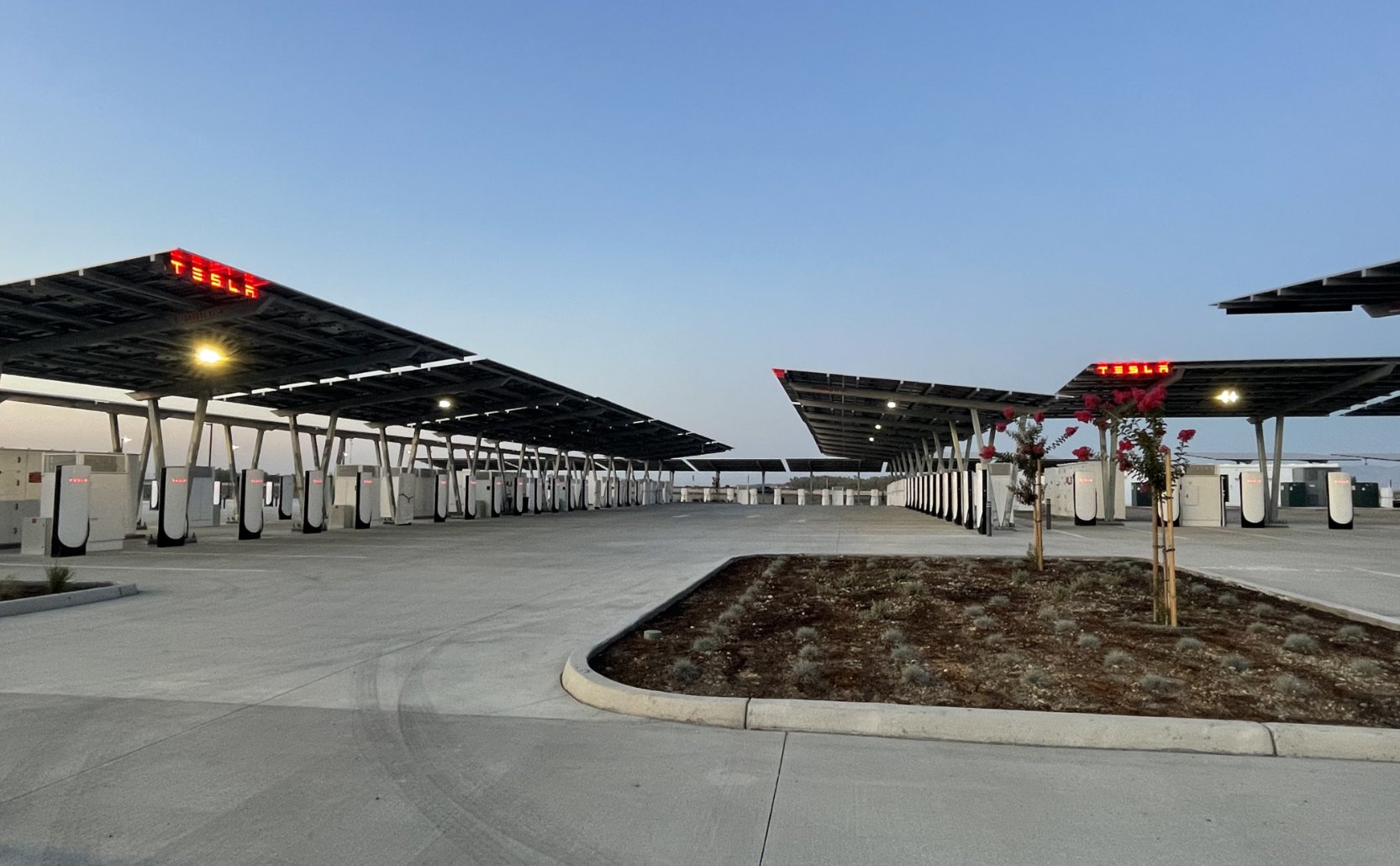
Tesla has officially launched the first several Supercharging posts at a massive station in California, notably including solar canopies and grid-scale batteries to offer completely renewable charging.
Last week, Tesla announced on X that it opened the first 84 Supercharger stalls of a planned 168-stall station in Lost Hills, California. Additionally, the massive Supercharger project features 11MW of solar canopies and 10 Megapack batteries for off-grid charging powered entirely by solar energy.
Tesla completed the first phase of the project just days ahead of the busy Fourth of July holiday weekend, adding that initial construction took just eight months. In addition to the remaining charging stalls, Tesla says it’s building a set of lounge areas, renderings of which can be seen below alongside current photos of the site.
Notably, the site also includes V4 charging posts for the company’s latest available charging speeds, and it’s located near the busy junction between I-5 and Highway 46 in Kern County.
“Thank you [Kern County] and [PG&E] for collaboration and approvals,” Tesla wrote in a follow-up post.
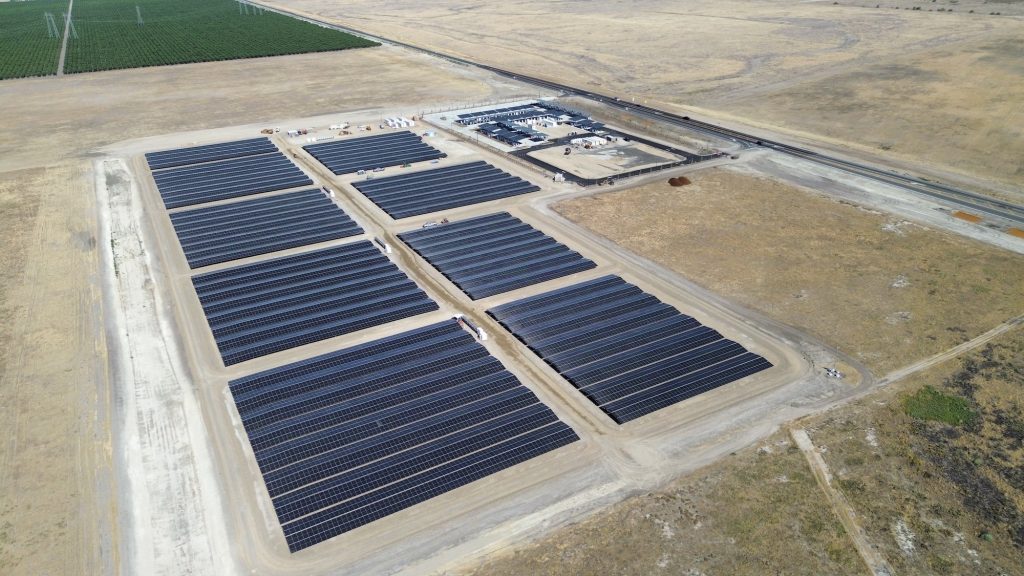
Credit: Tesla Charging | X
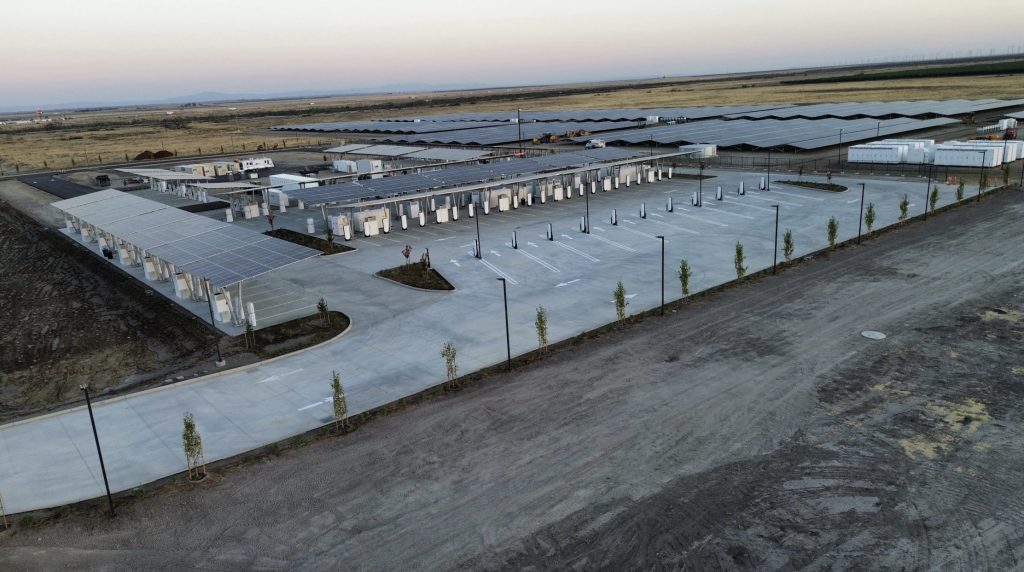
Credit: Tesla Charging | X

Credit: Tesla Charging | X

Credit: Tesla Charging | X
Tesla Supercharger Maps for North America, Europe, and Asia pic.twitter.com/0U5r0XRPyo
— TESLARATI (@Teslarati) July 2, 2025
READ MORE ON TESLA SUPERCHARGERS: Tesla launches ultra-fast V4 Superchargers in China for the first time
Testing at the LA Diner, plus Musk update on potential Tesla solar Gigafactory
The huge Tesla Supercharger station completed phase one of construction fairly quickly, especially given how long Tesla has been working on its unique Los Angeles diner, drive-in, and Supercharger location. Still, the company was seen performing some testing at the nearly-completed charging station earlier this month, and will reportedly be holding a job fair.
Elon Musk also responded on Monday morning to a post on X, suggesting that Tesla is “thinking about” building a U.S.-based solar Gigafactory in order to help support increased power needs with AI growth, and to bolster domestic solar production.
Tesla is building a new UFO-inspired Supercharger in the heart of Alien country
News
Tesla driver walks away from major accident with minor injuries
The driver sustained only minor injuries, and the exact cause of the crash remains under investigation.
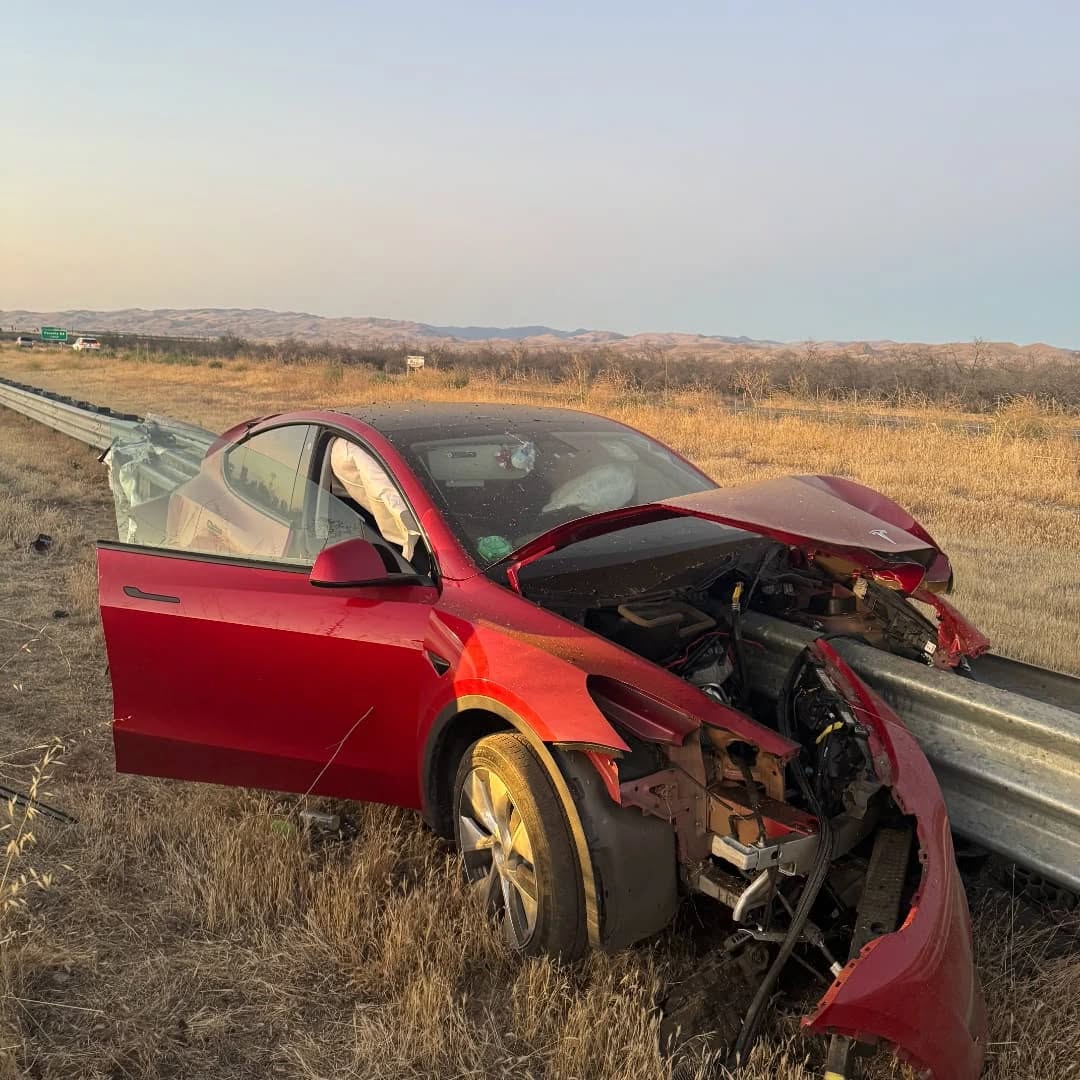
The driver of a Tesla Model Y survived and walked away from a harrowing accident on Monday in California, only sustaining minor injuries despite the vehicle being impaled by a guardrail.
On Monday morning around 4:34 a.m., the Los Banos division of the California Highway Patrol (CHP) responded to the accident on I-5 near Panoche Road, involving a 23-year-old in a Tesla Model Y. According to a post on social media, the driver veered off the road for unknown reasons in the northbound lane, before crashing directly into the guardrail and impaling the vehicle.
You can read the full message and photos from Los Banos CHP below, as were shared in a Facebook post on Monday afternoon.
This morning a Tesla model y was traveling in the #1 northbound lane of I-5 north of Panoche Rd. For unknown reasons driver allowed V-1 to veer off the roadway, travel through a dirt center divide, and crashed into the fixed metal guardrail. Lucky for the driver he only sustained minor injuries and was able to walk away. Driving a vehicle requires 100% attention to the road. Avoid distractions and focus on driving.
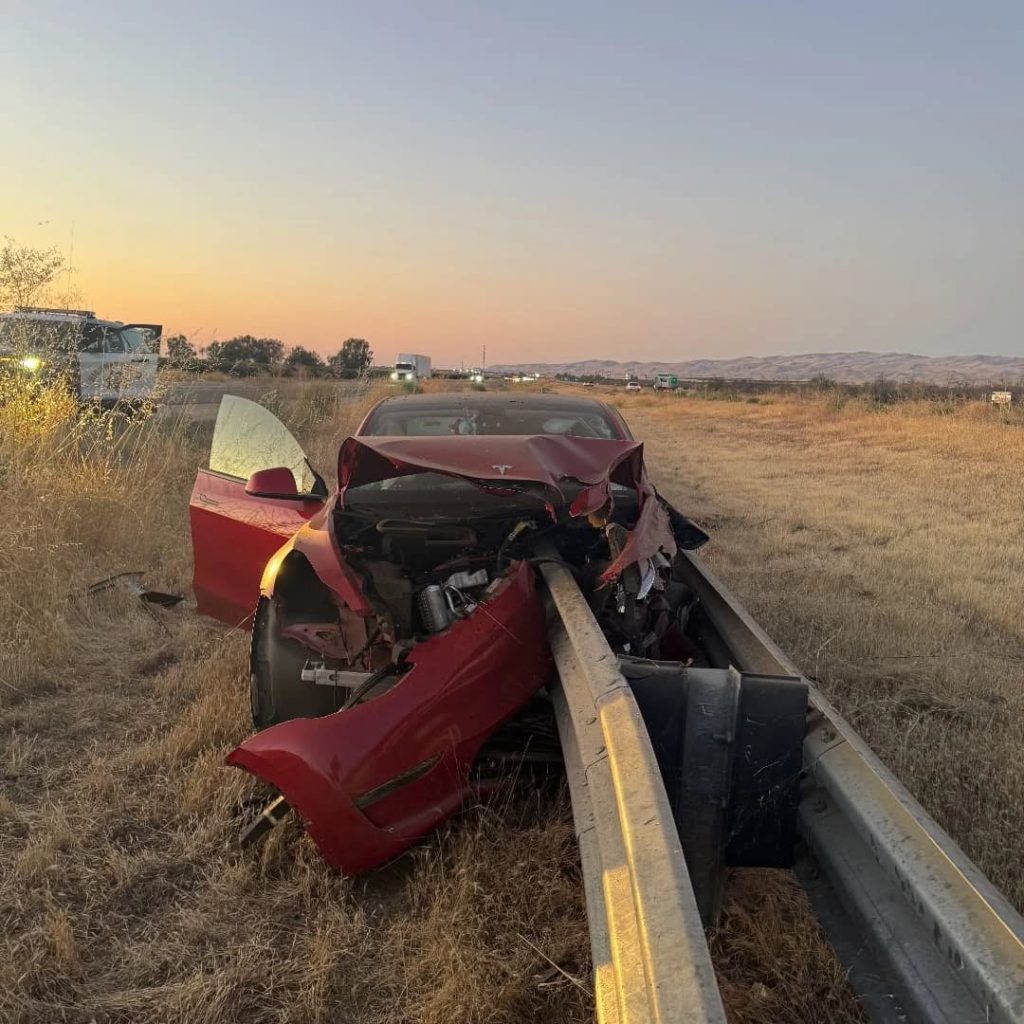
Credit: CHP Los Banos (via Facebook)

Credit: CHP Los Banos (via Facebook)
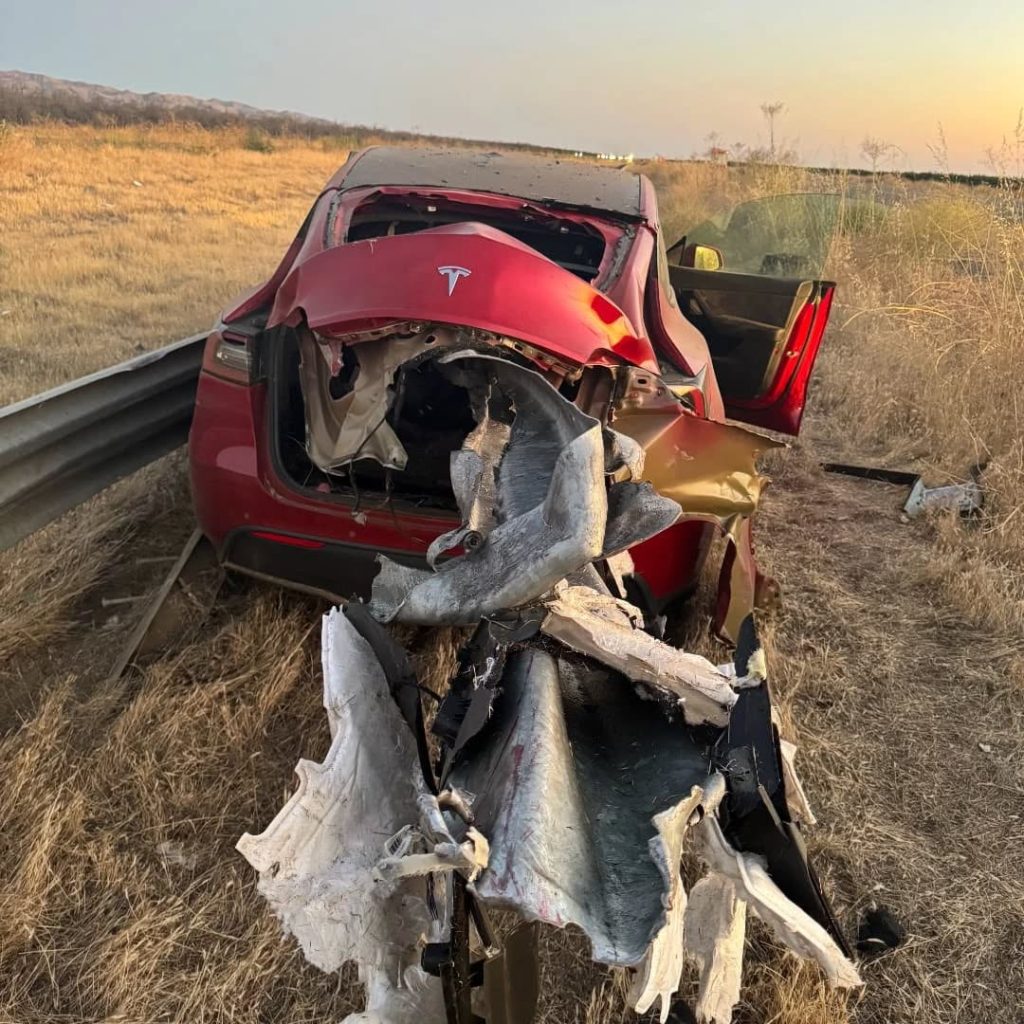
Credit: CHP Los Banos (via Facebook)
In a statement to SFGate, CHP officer Myles Anderson said that the driver only sustained minor injuries, while no arrests are made and drugs and alcohol are not suspected to have been involved. The report also notes that Tesla’s “cruise control and lane assistance features” were activated, according to Anderson. However, it’s not entirely clear if this is referring to Supervised Full Self-Driving (FSD), or to the cruise control and lane assist features baked into Autopilot.
At the time of writing, CHP has not yet responded to Teslarati’s request for clarification and additional details on the matter.
Tesla Crash Safety Ratings across its lineup: pic.twitter.com/ny30R7ceji
— TESLARATI (@Teslarati) July 1, 2025
READ MORE ON TESLA SAFETY: Tesla rolls out crucial new safety feature aimed at saving children
The news comes after Tesla has touted its vehicles as incredibly safe for many years. In December, for example, the company highlighted receiving top safety scores from regulators on four different continents throughout the world, including from the National Highway Traffic Safety Administration (NHTSA) and the Insurance Institute of Highway Safety (IIHS) in the U.S.
Tesla has also listed the goal of making its vehicles the safest on the road throughout the years, both in the overall design of its vehicles and in its Autopilot and Full Self-Driving (FSD) programs.
Tesla Model 3 ranks as the safest new car in Europe for 2025, per Euro NCAP tests
-

 Elon Musk1 week ago
Elon Musk1 week agoTesla investors will be shocked by Jim Cramer’s latest assessment
-

 News2 weeks ago
News2 weeks agoTesla Robotaxi’s biggest challenge seems to be this one thing
-
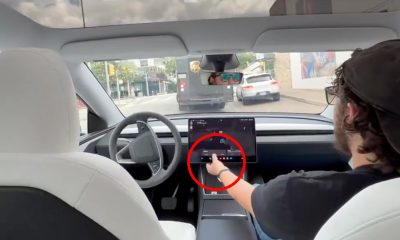
 News2 weeks ago
News2 weeks agoWatch the first true Tesla Robotaxi intervention by safety monitor
-

 Elon Musk1 week ago
Elon Musk1 week agoA Tesla just delivered itself to a customer autonomously, Elon Musk confirms
-

 News2 weeks ago
News2 weeks agoTesla Robotaxi rollout proves that Elon Musk still delivers, even if it’s late
-
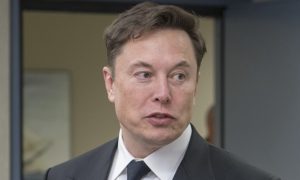
 Elon Musk2 weeks ago
Elon Musk2 weeks agoElon Musk commends Tesla team on successful Robotaxi launch
-

 Elon Musk2 weeks ago
Elon Musk2 weeks agoxAI welcomes Memphis pollution results, environmental groups push back
-
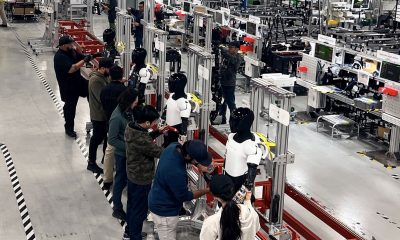
 Elon Musk2 weeks ago
Elon Musk2 weeks agoElon Musk confirms Tesla Optimus V3 already uses Grok voice AI


















